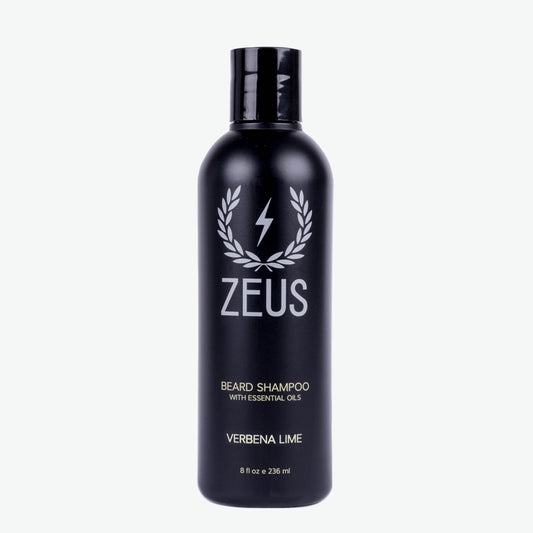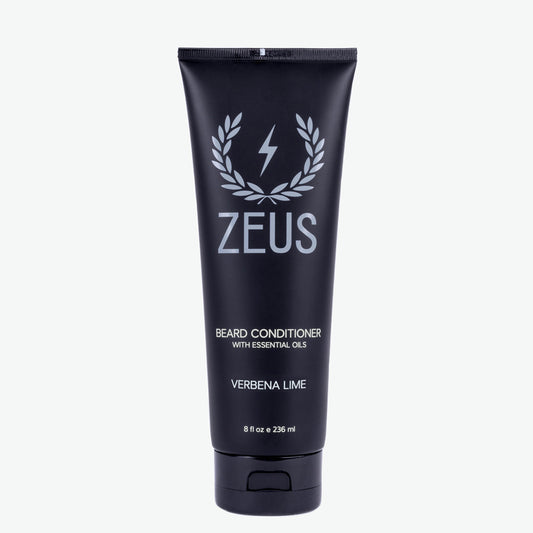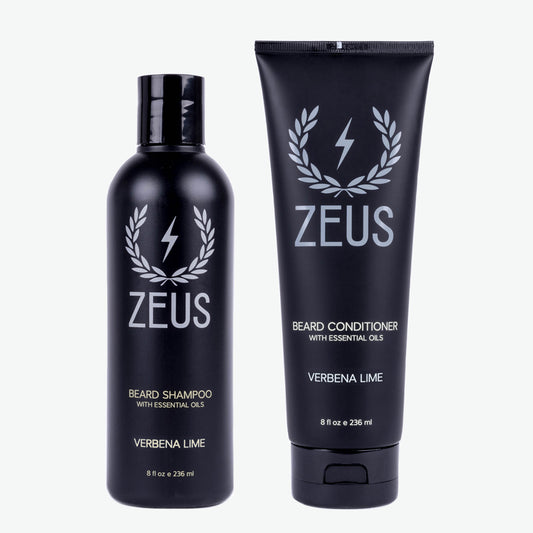Ingrown hairs can be one of the most frustrating parts of growing and maintaining a beard. You’re working hard to keep that beard looking sharp, but those pesky, painful bumps just won’t stay away. If you’ve ever dealt with an ingrown hair, you know it’s more than just a minor annoyance—it can cause discomfort, irritation, and even lead to infections if not handled properly.
But here’s the good news: with the right approach, you can not only remove ingrown hairs effectively but also prevent them from coming back. In this guide, we’ll dive into why ingrown hairs happen, how you can safely get rid of them, and what steps you can take to keep your skin smooth, healthy, and beard-ready. Whether you’re sporting a full beard or just a bit of scruff, these tips will help you avoid those unwanted bumps and maintain a well-groomed look.
Understanding Ingrown Hairs

So, what exactly is an ingrown hair? Simply put, an ingrown hair, or pseudofolliculitis is a hair that’s curled back into the skin instead of growing out of it. This often happens when a hair is shaved or cut too close to the skin, causing it to grow sideways or get trapped under the surface. The result? Red, irritated bumps that can be painful and unsightly.
When it comes to beard growth, ingrown hairs are particularly common. The hair on your face tends to be coarser and curlier, which makes it more likely to bend back into the skin. Add in the regular shaving or trimming that comes with maintaining a beard, and you’ve got a recipe for potential ingrown hairs.
These bumps aren’t just a cosmetic issue—they can have a real impact on your skin’s health. An ingrown hair can lead to inflammation, infection, and even scarring if not treated properly. Plus, they can be pretty uncomfortable, especially in sensitive areas like the neck or jawline.
Understanding why ingrown hairs occur is the first step in preventing them. By knowing what to look out for and how to adjust your grooming routine, you can keep your skin clear and your beard looking its best.
How to Prevent Ingrown Hairs

Dealing with an ingrown hair doesn’t have to be a nightmare. With the right techniques, you can safely remove them and keep your skin in top shape.
Why Exfoliation Matters
Exfoliating the skin around your beard is one of the most effective ways to prevent and treat ingrown hairs. By removing dead skin cells and unclogging pores, you give your hairs a clear path to grow out of the skin rather than getting trapped underneath. Regular exfoliation also helps to reduce the appearance of existing ingrown hairs, making them easier to manage.
Choosing the Right Exfoliant
When it comes to exfoliating, not all products are created equal—especially for men’s skin. Look for exfoliants that are gentle yet effective, such as those containing salicylic acid or glycolic acid. These ingredients help to break down dead skin cells without being too harsh. If you prefer a more natural approach, a scrub with fine granules like jojoba beads can do the trick without irritating your skin.
Step-by-Step Guide to Safe Exfoliation
- Start with Clean Skin: Before you exfoliate, make sure your face is clean. Use a gentle cleanser to remove any dirt, oil, or sweat.
- Apply the Exfoliant: Gently massage the exfoliant into the skin around your beard using circular motions. Focus on areas where ingrown hairs are most common, like the neck and jawline.
- Rinse Thoroughly: After a minute or two of exfoliating, rinse your face with warm water to remove the product and any loosened dead skin cells.
- Moisturize: Finish with a lightweight moisturizer to keep your skin hydrated and to help it recover after exfoliation.
Repeat this process two to three times a week, depending on your skin type and sensitivity.
Choosing the Right Razor and Shaving Cream

The razor you use can make a big difference in preventing ingrown hairs. Opt for a single-blade razor or a safety razor, which cuts the hair cleanly without tugging at it. Multi-blade razors can often cut hair too short, increasing the chances of it curling back into the skin.
As for shaving cream, go for one that’s designed for sensitive skin and provides plenty of lubrication. A good shaving cream will create a protective barrier between the razor and your skin, reducing friction and the likelihood of irritation.
Shaving Direction and Frequency

Always shave in the direction of hair growth, not against it. While it might be tempting to go against the grain for a closer shave, this can lead to more ingrown hairs. Shaving with the grain reduces the risk of cutting hairs too short or causing them to grow back into the skin.
It’s also important to avoid shaving too frequently. Give your skin a break between shaves to reduce irritation and give any potential ingrown hairs time to resolve on their own.
Post-Shave Care

After shaving, rinse your face with cool water to close your pores and reduce inflammation. Pat your skin dry with a clean towel—don’t rub, as this can cause irritation.
Follow up with an alcohol-free aftershave or a soothing balm to calm the skin. Look for ingredients like aloe vera, witch hazel, or tea tree oil, which have anti-inflammatory and antibacterial properties to help prevent ingrown hairs and keep your skin healthy.
By following these tips, you can effectively remove ingrown hairs and minimize the chances of them returning, leaving you with a smoother, more comfortable shave.
How to Diagnose and Remove Ingrown Hairs
Ingrown hairs can be a nuisance, but diagnosing and removing them properly can help you avoid unnecessary discomfort and potential skin issues. Here’s how to identify and safely get rid of those stubborn hairs.
Diagnosing an Ingrown Hair

What to Look For
Ingrown hairs are fairly easy to spot once you know what you’re looking for. They typically appear as small, raised bumps on the skin, often red or darker in color, with a hair trapped underneath. These bumps can sometimes be mistaken for pimples or razor bumps, but the key difference is that an ingrown hair is caused by a hair growing back into the skin instead of outward. You might notice a tiny loop of hair just under the surface or even see the hair curling back into the skin.
Signs of Infection
While most ingrown hairs will resolve on their own, they can sometimes lead to an infection. If the area around the ingrown hair becomes increasingly red, swollen, painful, or starts to produce pus, it’s a sign that the hair has caused a localized infection. In such cases, it’s best to consult a healthcare provider to prevent further complications.
How to Remove an Ingrown Hair

Step 1: Gentle Exfoliation
The first step in removing an ingrown hair is to gently exfoliate the affected area. Exfoliation helps remove dead skin cells that may be trapping the hair beneath the surface, making it easier to release the hair. Here’s how to do it:
- Wash the Area: Start by cleansing the skin with warm (not hot) water and a gentle cleanser. Warm water helps to soften the skin and open up pores.
- Exfoliate Gently: Using a washcloth, exfoliating brush, or a gentle scrub, apply the exfoliant to the area in small, circular motions. Be gentle to avoid irritating the skin further. This will help to lift the hair closer to the surface.
- Rinse and Pat Dry: After exfoliating for a minute or two, rinse the area thoroughly with lukewarm water and pat it dry with a clean towel.
Step 2: Manual Extraction
If you can see the loop or tip of the ingrown hair just under the surface, you can carefully extract it using a sterile tool. Here’s how:
- Sterilize Your Tools: Use rubbing alcohol to sterilize a needle, pin, or tweezers. This step is crucial to prevent infection.
- Prepare the Skin: Apply a small amount of rubbing alcohol to the skin around the ingrown hair. This helps to sanitize the area and reduce the risk of infection.
- Release the Hair: Gently insert the sterile needle or pin under the loop of the hair and lift it to release it from the skin. If you’re using tweezers, carefully grasp the hair and pull it out. Be gentle to avoid breaking the hair, as this could cause it to become ingrown again.
- Clean the Area: Once the hair is removed, clean the area again with rubbing alcohol or a gentle antiseptic to ensure it stays infection-free.
Step 3: Monitor for Healing
After removing the ingrown hair, keep an eye on the area over the next few days. Most ingrown hairs will heal on their own, but if you notice any signs of infection or if the area becomes more irritated, consider seeking medical advice.
When to Seek Medical Treatment

If the ingrown hair is deeply embedded, infected, or causing significant discomfort, it’s best to consult a healthcare provider. They can prescribe medications such as antibiotic ointments, retinoids to remove dead skin cells, or steroid creams to reduce inflammation. In severe cases, treatments like laser hair removal or electrolysis might be recommended to prevent future ingrown hairs.
By diagnosing and removing ingrown hairs properly, you can avoid the discomfort and potential complications that come with them, keeping your skin healthy and smooth.
By incorporating these tips into your grooming routine, you’ll not only keep ingrown hairs at bay but also ensure your skin stays healthy and irritation-free. Remember, a little prevention goes a long way in keeping your beard looking its best. Here’s to a smoother, more comfortable shave!
Keep Your Beard Smooth, Not Bumpy!
By incorporating these tips into your grooming routine, you’ll not only keep ingrown hairs at bay but also ensure your skin stays healthy and irritation-free. Remember, a little prevention goes a long way in keeping your beard looking its best. Here’s to a smoother, more comfortable shave!








